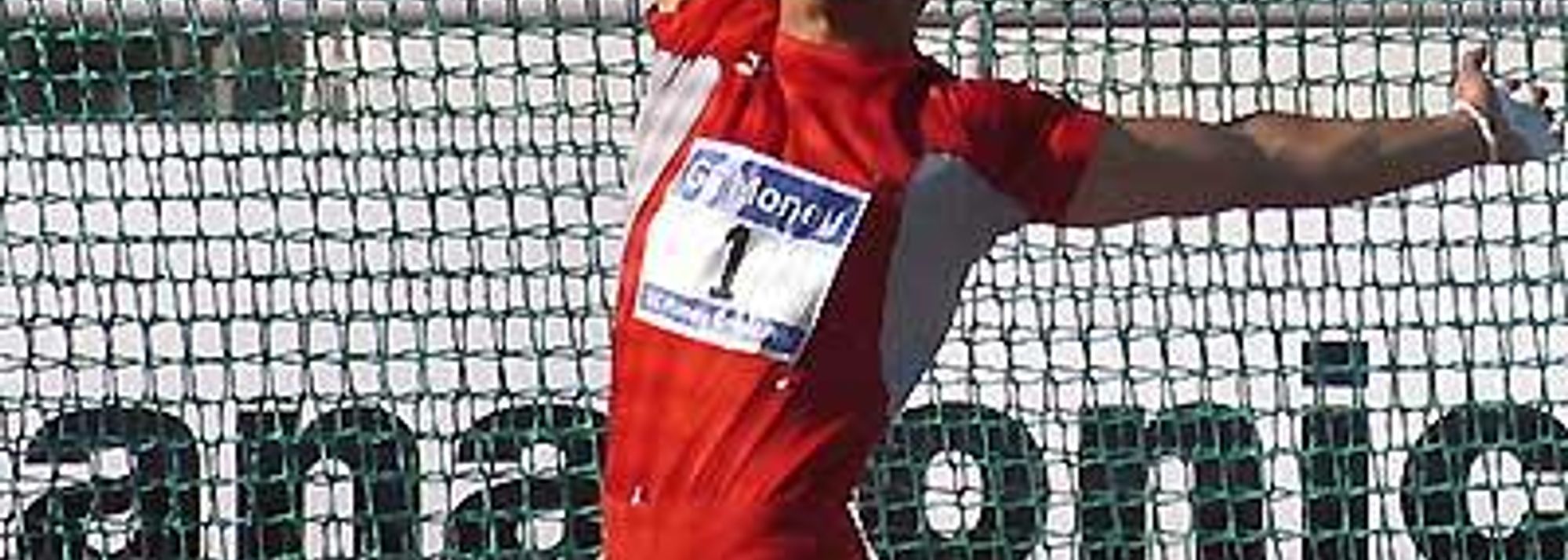Koji Murofushi throwing in Helsinki (© Paula Noronen)
“How is everyone?” opens Koji Murofushi’s second diary installment for the IAAF website. The Olympic Hammer Throw champion on this occasion writes about his latest activities and thoughts, which include a little bit of sword play…well virtually, and some reminisces about his friend the triple jumper Willie Banks.
“Firstly, the other day, I had a chance to talk to the staff of the magazine called ‘Sports Kids Alpha’, a magazine geared towards kids. In Japan, perhaps because raising kids is getting difficult these days, an increasing number of people are interested in the Athletes’ way of life. So whenever opportunities arise, I try to speak to audience and talk to journalists on this subject.”
“In my case, I started to throw a hammer partially because my father was a national record holder in the event. He was a coach and I also attended his lectures at University. However, sometimes in the past I have been a little rebellious against my father. I did not listen to him, and tried to do everything in a way I thought was correct. To my dismay, my performances declined, which gave me much distress. I may have been too conceited at the time. When I decided to listen to my father carefully, my performances started to improve. It was then that I learned the importance of parental love for a child, and their wish that child excels in whatever task he/she attempts.”
“My father is not a type of person who gives detailed instructions of what to do. He does not grumble like ‘You ought to practice more’ either. During training sessions, my father is a kind of person who waits patiently until the athlete notices the problem on their own. Then if and only if he sees it to be necessary, he will give detailed instructions. I grew up watching how my father functioned, and thus I would like to relay his messages to the outside world.”
“Lately, I have been watching movies about Musashi Miyamoto, a master swordsman in 17th century. I am also reading his writing. His five volume books on swordsmanship called ‘Gorin no sho’ (translates as ‘the book of five rings (earth, water, fire, wind and sky), is quite a famous book in Japan. Ever since my early 20’s, from time to time, I used to take his books on my travels, but when I read them again now, I find renewed interest in the book.”
“Musashi fought 60 sword fights during his lifetime and remained undefeated. His double sword fighting style is well known and his strategies are very interesting. Of special interest is his epic battle in Ganryu Island against Kojiro Sasaki, the swordsman considered to be Musashi’s equal at the time. He won this famous battle with master tactics. As a part of his strategy, Musashi arrived at the battle scene four hours late. Musashi knew he needed to get away from his pursuers quickly after the battle. So, it is said that he calculated his arrival time precisely based on high and low tide of the day, so he can leave the island quickly after the battle. Kojiro became upset and distressed waiting for Musashi’s arrival, and furthermore it is said that being exposed to sea winds for a long time, his muscles had stiffened before the battle.”
“Musashi writes that he was concentrating on winning battles until about 29 years old. However, after turning 30, he started to detach himself from the world of fierce competitions. And by the time he was 50, he was a master swordsman. He had perfected his style.”
“The Japanese refer to such state of mind as “Mastered the way of Life.”
“In order to master the swordsmanship, I imagine that it is necessary to stop thinking about winning. Even in our sports, when compete to the very best of our ability, we find ourselves not too concerned with winning or losing.”
“By the way, my friend Willie Banks, the former World record holder for the Triple Jump, is a big fan of Musashi. Willie said he learned a lot from Musashi’s books of swordsmanship, and as a consequence he came to love Japan. Willie came to Chukyo University, where I train regularly, and was coaching at the University for a while. Willie is a wonderful person, who is as energetic as active athletes.”
Koji
Previous diary entry



